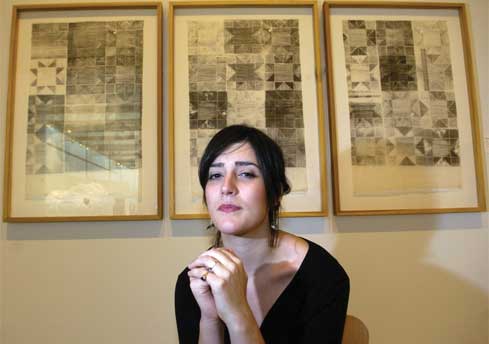 Summer 2010
Summer 2010|
A century after its founding, hundreds of regional artists continue to find artistic fellowship in the Associated Artists of Pittsburgh.
Celebrating its centennial year, this predominately volunteer-driven, artist-run organization is the oldest continuously exhibiting visual arts group in the country. Founded in 1910 when traditional landscapes, portraits, and still lifes ruled, AAP has remained relevant by providing artists with the means to see and be seen. Its most prestigious event, the Annual, is open to all artists 18 years of age and older living within a 150-mile radius of Pittsburgh. It’s this vehicle that has enabled AAP not only to survive, but also to present more regional art to the public than any other group in the city. At last count, in its first 50 years alone, more than 10,000 works were displayed—some created by artists exhibiting for the very first time (a statistic that makes AAP very proud). More often than not, this juried exhibition, dubbed “Popular Salon of the People” by the Pittsburgh Press, has been held at Carnegie Museum of Art. The 2010 show opens at the museum on July 24. Throughout the decades, the Annual has served as an artistic-affirming, resume-building, and buzz-generating event for the likes of Mary Cassatt, Edward Hopper, Philip Pearlstein, and Andy Warhol. Add to that list Lizzy DeVita. Her entries in the last three Annuals caught the eye of a local gallery owner and, as a result, have earned this East Liberty resident a solo show in 2011. Growing up in Pittsburgh, DeVita, not unlike Warhol, couldn’t wait to leave town. But soon after graduating from New York City’s Barnard College and landing a job with a “fancy” printmaking company, she began to find the Big Apple a bit daunting. “At this point in my career, which is the beginning,” the 23-year-old says, “it occurred to me that it might be a deterrent to stay in New York because art is so market-driven there.” She made the decision to move back to her hometown and quickly took a job with a non-profit agency that affords her enough money to eat and enough time to explore her art. For Chilean-born Alberto Almarza, an artist and teacher, Pittsburgh has provided fertile ground to grow his artistic sensibilities. According to Almarza, who arrived here 10 years ago when he was just 18, the city and art are in sync. “Pittsburgh offers a whole range of artistic expression,” he says, “from galleries and museums to street art, computer geeks, and punks.” That’s not quite the picture Robert Qualters would have painted as a young artist living and working in Pittsburgh some 40 years ago. Now 76, he recalls the local art scene, circa the 1960s, bordering on “desolate.” In fact, Qualters adds, “I can’t remember any commercial galleries.” Although they have traveled different paths, these artists share a common thread: the AAP, home to many of the region’s visual artists who help define the art scene in Pittsburgh. With its ranks approaching the 500 mark, the group has a membership more diverse than many may assume, although it wasn’t always that way. “We have a wonderfully rich history,” AAP president Kathleen Zimbicki asserts; not to mention a reputation for skewing toward an older, more female membership. But just as Pittsburgh’s rap as a still-smoky city no longer holds true, neither does AAP’s. “We encourage new older people and new young people to join,” the 75-year-old from Carnegie notes. As further evidence, Zimbicki points to AAP’s new director, Jeanine Hall, who happens to be under 30. After “just kind of ending up here” in 2006, the 26-year-old Hall has spent her time working on her own art, volunteering at the Mattress Factory and Brew House Association, earning a degree from Carnegie Mellon University in arts management, serving as the director of UnSmoke Systems Artspace in Braddock, and now, following a stint as an administrative assistant at AAP, taking on her new role as its managing director. Interestingly enough, Hall is not exactly in love with Pittsburgh, although she does appreciate its affordability. “There is a lot of potential here for artists looking to start or have a home base,” says Hall, who moved from Baltimore, Maryland, and now lives in Braddock. “The town has grown on me. I’m here for now definitely, but I’m not the settling kind.” By contrast, Qualters did opt to stay. He settled in Squirrel Hill, raised a family, and maintained his painting career. Still on the job in his West Homestead studio, he takes on commissioned projects and his own flights of fancy. He was also instrumental in organizing AAP’s recent exhibition designed to bring emerging and experienced artists together, noting that even at his age, he continues to grow and change as an artist. “I do think my work is less descriptive and more open to fantastic interpretations,” Qualters says. The first thing Almarza says about his art work is that it’s hard to describe. “Most of what I do,” he explains, “is take internal landscapes—emotions and dream states—and turn them into physical form.” Also taking physical form for Almarza are his family, his Bloomfield home, and his classroom at Pittsburgh’s Creative and Performing Arts High School. “Teaching visual arts to sixth-, seventh-, and eighth-graders is definitely different from doing my own art and definitely fulfilling,” Almarza says. “It’s the ideal job.” Regardless of age or mailing address, artists are more alike than not. “In essential ways,” Qualters asserts, “we’re the same.” And for the past 100 years and counting, AAP has been celebrating the similarities as well as the differences. |
Also in this issue:
Growing Up With Science · The Disappeared · Ode to a Collection · Twisted Pair · Special Supplement: A Tribute to Our Donors · Directors' Note · NewsWorthy · Face Time: Zhe-Xi Luo · Artistic License: Domestic Explorations · Science & Nature: Geological Wonder · The Big Picture
 |
Copyright © 2017 CARNEGIE Magazine. All rights reserved. |

